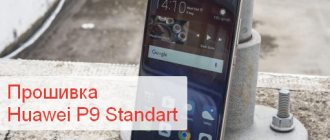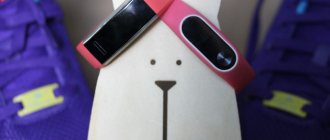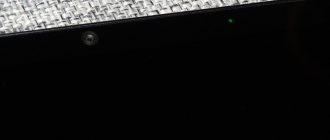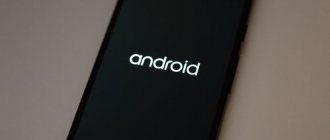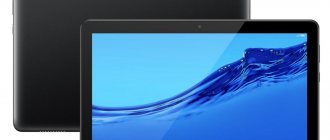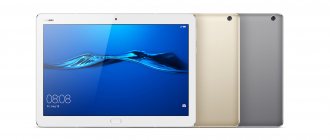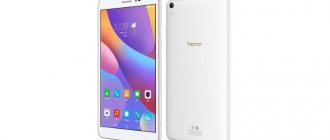In January, at CES 2021, Huawei presented a 10-inch version of its MediaPad tablet with advanced sound from Harman/Kardon and a Wacom stylus included. Trashbox presents one of the first Russian-language reviews of this model.
The best Telegram channel about technology (possibly)
Specifications
- Screen: 10.1", IPS, 224ppi, 1920 x 1200;
- Operating system: Android 5.1.1 (EMUI 3.1);
- Processor: HiSilicon Kirin 930, 4 x Cortex-A53, 1.5 GHz, 4 x Cortex-A53e, 2 GHz;
- GPU: Mali-T628 MP4, frequency 680 MHz;
- RAM: 3GB, LPDDR3;
- Built-in memory: 64 GB, supports microSD memory cards up to 128 GB;
- Cameras: 13MP (autofocus), 5MP;
- Battery: 6600 mAh, non-removable;
- Dimensions (WxHxD): 239.8 x 172.75 x 7.35;
- Weight: 490 g;
- SIM slots: 1, Micro-SIM;
- Communication: GSM: 850 / 900 / 1800 / 1900 MHz, HSPA+ up to 42 Mbit/s, FDD: Band 1, 3, 7, 8, 20; TDD: Band 38, 39, 40, 41;
Huawei MediaPad M2 10.0 LTE 16Gb tablet: Review
Materials and design - 4.5
The MediaPad M2 10 tablet looks attractive, but not original; it looks like any metal smartphone or tablet from the company from 2015-2016.
From the front, it is almost indistinguishable from the already far from new Samsung Galaxy Tab 3 10; only the Huawei inscription on the case helps to recognize the device. It's the same white rectangle with rounded edges, even the button under the screen looks the same. The side frames look quite wide, but this is not so bad - you can hold the tablet by them without fear of touching the screen. From the back, the device looks like a stretched company smartphone, for example, Huawei G8 - a metal surface with a horizontal insert closer to the top end. In addition, on the back there is only a camera lens with an LED backlight and the Huawei logo. At the ends you can find four stereo speakers, two at the top and two at the bottom.
The build quality of the Huawei MediaPad M2 10 is at a good level, even the keys are firmly fixed and do not move from side to side if you press on them. True, the combination of a large diagonal and a thin body means that it is quite easy to bend it - by deliberately pressing on it or hitting something massive with it while moving.
Huawei MediaPad M2 10 can be purchased in two colors - gray and gold.
Dimensions and weight - 4.0
The Huawei MediaPad M2 10 tablet is a relatively compact device for its large diagonal, but in size and weight it is still inferior to its famous and more expensive competitors.
The tablet weighs 498 grams, its dimensions are 240x173x7.7 mm, it is slightly shorter, but wider and thicker than the Sony Xperia Tablet Z4. If we compare it with the iPad Pro 9.7, the MediaPad is not much, but still loses in all respects. Despite the difference in weight of only 50 grams, Apple's tablet feels light, while the Media Pad M2 already feels heavy. It is inconvenient to carry the device in your hand for a long time without a case or bag. The only pity is that in the company store the case for the tablet is only in the picture - it is not for sale (at least not yet).
Ports and interfaces - 4.5
Huawei MediaPad M2 10 has a good set of connectors and interfaces; perhaps NFC or an infrared port could be added.
Nominally, all communications look typical - Bluetooth, Wi-Fi, A-GPS, LTE, so what's wrong with that? And the fact that they are all advanced - high-speed Internet (up to 150 Mbit/s), Wi-Fi - dual-band and high-speed, and in addition to GPS, there is also support for GLONASS. You can even make calls safely from the tablet (unlike the same iPad). True, calling from such a bandura is inconvenient, and it looks extremely strange. The same MicroUSB connector is not simple, but with a USB Host for connecting peripherals. At the same time, On-The-Go support is not indicated anywhere, but with the help of a simple test we were able to connect, for example, a mouse via an OTG cable, although the external hard drive no longer wanted to be detected.
The location of connectors and buttons is as follows:
- on the right side there is a power key and a volume rocker
- on the top edge there are a pair of speakers, a microphone hole and a headphone jack
- at the bottom there are a couple more stereo speakers
- on the left side there is a MicroUSB 2.0 connector, slots for MicroSIM and MicroSD cards.
Performance - 4.0
The Huawei MediaPad M2 10 is powerful enough to run most applications quickly, but sometimes it still stutters in the heaviest games.
The device received a proprietary eight-core HiSilicon Kirin 930 processor (four cores operate at frequencies up to 1.5 GHz, the other four - up to 2 GHz). The Mali-T628 MP4 (680 MHz) accelerator is responsible for solving graphics problems. Despite the fact that this is a flagship-level chipset (the same one used in the Huawei P8 and MediaPad X2), it is already last year’s and therefore inferior to more modern solutions. The amount of RAM depends on the permanent memory, the 16 GB version is equipped with 2 GB RAM, the 64 GB version is equipped with 3 GB RAM.
In everyday use, the tablet works quite quickly and smoothly, but sometimes there are slight slowdowns, for example, when working in dual-window mode. However, they are not critical and rather allow us to draw a line between it and the more powerful iPad Air 2 in terms of operating speed. The tablet copes with all applications and games, but can slow down in the heaviest ones. For example, in NOVA 3 the frame rate drops very noticeably in the most computationally intensive scenes.
In various comparative benchmarks, Huawei MediaPad M2 10 received scores at the level of flagships 1-2 years ago:
- Sunspider (browser speed) - 695 ms, slightly faster than Asus ZenPad S 8.0 Z580CA;
- GeekBench 3 (processor test) - 3728 points, almost 600 points lower than the Sony Xperia Z4 Tablet;
- 3DMark Ice Storm Unlimited (graphics test) - 12345, comparable to the result of the Lenovo Vibe X2 smartphone.
Display - 4.4
We can call the screen of the Huawei MediaPad M2 10 high-quality and quite clear, but it lacks pixel density, slightly wider viewing angles and better readability on the street.
The tablet display resolution is 1920×1200 pixels, matrix type is IPS. Together with a diagonal of 10.1 inches, we get a pixel density of 224 per inch. This is quite clear for a tablet, but small irregularities in fonts and icons on such a screen will be visible to the naked eye. The screen received protective glass from the Asahi Glass company and a fairly good oleophobic coating - the display does not get dirty very quickly and is wiped off quite easily. Viewing angles are quite good, although IPS matrices can be wider. The measured brightness range turned out to be ambiguous - from 24 to 411 cd/m2. On the one hand, it is quite bright, but on the other hand, it will be uncomfortable for the eyes in the dark. Despite good brightness, the screen is a bit difficult to read on a sunny day. The only thing we can blame for this is the glare on the glass of the tablet - we can’t blame the problem on the contrast; it is high, 1030:1, on par with the iPad Pro 12.9 and Lenovo Yoga Tab 3 Pro. The brightness distribution is average - 88%, typical for most tablets. The color gamut is good, covering 96% of the sRGB standard. The average color deviation is small and will only be noticeable to a colorimeter or a rare specialist.
Battery - 4.4
The autonomy of Huawei MediaPad M2 10 is high. It lasts a long time, but still, in most usage scenarios, the tablet discharges a little faster than the same iPad Pro 9.7.
The device's battery capacity is 6660 mAh, an impressive number, but how long is it enough? In heavy games with maximum brightness, the tablet's display lasted for more than four hours - not bad, but it can be better. For example, the iPad Pro 9.7 had the same result. At the same time, some tablets with a capacious battery and mediocre performance last longer, for example, the Lenovo Yoga Tablet 2 10 lasted almost 6 hours in games. A video marathon in the form of non-stop watching movies in HD resolution at a display brightness of 150 cd/m2 discharged the Huawei MediaPad M2 10 in 10.5 hours. This is half an hour less than the iPad Pro 9.7, but much better than the Sony Xperia Z4 Tablet. In idle mode with the screen dimmed, the device can work for about 22 hours. This time is comparable to the result of the Samsung Galaxy Tab S 10.5.
Cameras - 5.0
Huawei MediaPad M2 10 has excellent 13 and 5 MP cameras by tablet standards, comparable in shooting quality to mid-priced smartphones. To be honest, shooting on a large tablet is inconvenient; in our opinion (and in the opinion of most manufacturers), cameras in general could be sacrificed for the sake of a lower price. The only thing really useful is the front one - for video communication.
So, if you still decide to shoot with such a large “shovel,” then good cameras await you. If we compare them with telephone ones, they lack a little detail, plus they are noticeably “noisy” in the room. Otherwise, everything is not so bad - the white balance is sometimes “wrong”, but focusing, as a rule, works quickly and clearly. The camera interface is quite simple - in it you can shoot “Photo”, “Video”, as well as “Time Lapse”, or “Decoration” with the function of decorating faces of the same name. In addition, there is a separate set of filters like vintage, monochrome and a number of others with beautiful names - good for pampering. In the settings, you can slightly adjust the ISO or white balance, or select a panorama shooting mode, HDR mode, or shooting a photo with the ability to adjust the focus later. There is nothing unusual in terms of video - Full HD resolution with stereo sound is available.
The front camera does a good job of taking selfies, although it is needed more for video calling than for photos. Despite the 5 MP module, video is limited to HD resolution (1280x720 pixels), although formally it could shoot in Full HD.
Photos from the camera Huawei MediaPad M2 10 - 5.0
View original photos
Temperature - 2.4
The body of the Huawei MediaPad M2 10 can heat up noticeably, but not so much when compared with the average tablet.
In idle mode, the case temperature does not exceed 33 degrees on the display. It's a bit much for doing nothing, but it's not too hot. If you load the tablet with tasks, the back of the device can heat up to 42 degrees at the top. This feels like a certain discomfort, but many devices, such as the Asus Memo Pad FHD 8 or Xperia Z4 Tablet, were actually even hotter.
| Maximum surface temperature of Huawei MediaPad M2 10 | |||
| Name | Sony Xperia Z4 Tablet | Huawei MediaPad M2 10 | Apple iPad Air 2 |
| Temperature | 48.5 °C | 42 °C | 38.1 °C |
Memory - 5.0
Huawei MediaPad M2 10 comes in two versions - 16 and 2 GB of storage and RAM, or 64 and 3 GB, respectively. The 16 GB version will give you 10.3 GB, which is not that much for a tablet. But you can always expand this volume using a MicroSD memory card, and you can add up to 128 GB. You can not only store videos, photos and music on the card, but also transfer many large applications to it.
Peculiarities
Huawei MediaPad M2 10 runs Android 5.1 OS and the proprietary EMUI 3.1 interface. At the moment there is no information about an update to Android Marshmallow, it is very likely that there will not be one at all, which is typical for most tablets.
Unusual features of the MediaPad M2 10 include a metal body, a fingerprint scanner and four stereo speakers on the body. It is curious that they tried to make the fingerprint sensor functional - it not only unlocks, but also controls the tablet. So, if you just click on it, it’s the same as pressing the “Home” key; if you swipe from left to right, it’s the same as pressing the “Back” button; from right to left, you’ll get to the list of active applications. In addition, you will be pleased with the branded M-Pen stylus included. It feels comfortable in the hand, but the image lags a little as it follows the stylus tip. The accessory runs on an AAAA battery, which is not very often found on sale. The company claims that the touch sensor on the stylus can distinguish up to 2048 levels.
Another interesting feature is telephony capabilities (calls handsfree or through a headset), adjusting the color temperature of the image and a number of proprietary interface features such as two-window mode and voice control.
Equipment
Let us immediately note that in Russia the Huawei MediaPad M2 10.0 will go on retail sale in two versions: silver with 16 GB of internal and 2 GB of RAM and gold with 3 GB of RAM and 64 GB of storage. Together with the tablet, Huawei offers a charger (5V, 2A), a USB cable, a warranty card, a quick user guide, and a needle for removing the SIM card. Along with the more expensive, gold version of the device, the buyer receives a Wacom digital pen that recognizes 2048 pressure levels.
The test included a pre-sale version of a silver tablet, but with 3 GB of RAM and 64 GB of storage, without any accessories.
Design
As you understand, there are two versions of the Huawei MediaPad M2 tablet. One model comes with an 8-inch screen, while the second has a 10-inch display. We focus mainly on the larger version.
The design of Huawei MediaPad M2 10.0 is reminiscent of some smartphones and the first tablets of the MediaPad line. It has a metal back panel, as well as a plastic insert at the top, under which there are communication antennas.
Huawei MediaPad M2 10.0 has a case thickness of 7.3 mm and a weight of 492 grams. It's a fairly heavy tablet to use one-handed, and in general, widescreen tablets are a little more difficult to use than devices with 4:3 displays.
The standard version of the MediaPad M2 has a very affordable price, and the premium model includes a set of additional features, for example, 64 GB of internal memory, instead of 16 GB. However, both versions have a slot for microSD memory cards.
If you buy the premium version, you will also receive a case and screen protector.
Appearance
The Huawei MediaPad M2 10.0 tablet computer has a thin – 7.35 mm, metal case. Above the screen, to the left of the manufacturer’s logo, there is a front camera and a light sensor, and to the right of the inscription there is an LED indicator. The fingerprint sensor pad built into the center of the bottom frame functions as a home key and recognizes several gestures, but there are no mechanics in its design.
The back panel of the device is non-removable; in its upper part there is a large plastic insert with a camera module and a flash in the center. There are antennas hidden nearby. The most interesting design feature of the Huawei MediaPad M2 10.0 is the four speakers, which are located in pairs on the top and bottom edges of the device. In addition to them, on the top edge there are: a 3.5 mm jack and a microphone hole.
Huawei MediaPad M2 10.0 is equipped with an expansion slot for microSD, up to 128 gigabytes. It supports the tablet and work in cellular networks; for this purpose, there is also a Micro-SIM slot on the left side. The materials used in the design are of high quality, but, as we noticed, the frame of the test sample creaks slightly when pressed near the corners of the screen.
Display
The MediaPad M2 10.0 display occupies a decent area of the front panel, the frames on the right and left are narrowed, so that the aspect ratio of the screen is 16:10. It uses a 10.1-inch IPS panel with a resolution of 1920 x 1200. The number of pixels per inch reaches 224. This is slightly less than the advertised threshold of 300 ppi, but, nevertheless, individual pixels are indistinguishable by eye.
Contrast, color rendering, absence of an air gap, viewing angles - all these parameters indicate the high quality of the matrix used. However, we have some comments regarding the backlight - the maximum brightness level is average, and the uniformity of the white field leaves much to be desired. There are small highlights in the corners, while closer to the center of the screen the backlight is paler. The MediaPad M2 10.0 screen has a medium-effective oleophobic coating, the touch layer recognizes up to 10 simultaneous clicks, and the touchscreen sensitivity is high.
Battery
Huawei MediaPad M2 10.0 has good battery life. The 6,600 mAh battery offers 13 hours of video playback, while an hour of playing Minecraft reduces the battery level by exactly 20%.
After simple mathematical calculations, we found out that the tablet can work for about 5 hours while running games. This is a more than decent result for a 10-inch tablet.
Iron
This tablet is powered by an eight-core HiSilicon Kirin 930 chipset with a Mali-T628 MP4 graphics accelerator. The amount of RAM is 3GB.
Kirin 930 is a development by Huawei, built on the ARM big.little architecture, which involves switching between four energy-efficient cores and four productive ones. Usually this is a combination of Cortex-A53 and Cortex-A57, but in this processor four Cortex-A53e cores with a frequency increased to 2 GHz are responsible for performance. This approach, according to the developers, makes the processor more economical while maintaining a high level of performance.
Huawei MediaPad M2 10.0 works quickly, both in benchmarks and when performing real-world tasks. We tested the tablet in Asphalt 8: Airborne, Modern Combat 5, World of Tanks Blitz, mobile versions of XCOM: Enemy Within, Grand Theft Auto: San Andreas, The Walking Dead, Mortal Kombat X, and never encountered even minimal problems. But it is necessary to take into account that the Mali-T628 does not have the largest performance reserve for the future, and the lack of power will begin to be felt in games in a year or two.
The fingerprint scanner works quickly, and, importantly, regardless of the angle at which your finger is applied to it. You can store up to 5 prints in the tablet's memory. We advise you to carefully follow the instructions accompanying the registration process, since the ease of use of the sensor largely depends on its correct completion.
⇡#Hardware and performance
The tablet is built on the well-known system-on-chip of Huawei’s own design – HiSilicon Kirin 930. By the way, it also underlies the once flagship smartphone Huawei P8 and the compact tablet Huawei MediaPad X2. The platform itself appeared on the market at the beginning of 2015 and was already losing to older systems-on-a-chip from other manufacturers. Of course, after a whole year, the gap between it and more recent top platforms has increased even more - so we certainly don’t expect performance miracles from the MediaPad M2 10.0.
Let us remember that the Kirin 930 platform is built on the ARM big.LITTLE architecture: it includes eight not very powerful ARM Cortex-A53 cores, half of which operate at a standard frequency of 1.5 GHz, and the other half at an increased frequency of 2 GHz. The platform was made using an outdated 28-nanometer technological process.
In the general synthetic AnTuTu test, the tablet scored just over 45 thousand “parrots”. The result is acceptable, but current flagship smartphones and tablets built on new platforms score about sixty thousand points. In everyday life, the device behaves well: it does not slow down, smoothly displays the operating system animation, and quickly switches between programs. The browser can store many open tabs and open them without painful page loading - the benefit of RAM in our version (Premium Edition) is as much as three gigabytes. We don’t know how the standard modification fares with this, but two gigabytes may not be enough for a modern Android tablet.
The ARM Mali-T628 MP4 module operating at 600 MHz is responsible for the graphics in HiSilicon Kirin 930. Its capabilities are enough to display videos in the screen’s native Full HD resolution and run casual arcade games. Simple toys on the Huawei MediaPad M2 10.0 work quite stably.
However, as soon as you launch some “heavy” game on the tablet, it begins to slow down and generally show in every possible way that life did not prepare it for this. Even if you reduce the graphics settings in some new Asphalt to a minimum, the picture will still jerk, and the number of frames per second will periodically drop below the coveted 30 FPS. In general, the MediaPad M2 10.0 LTE is clearly not for those who like to play. It can handle all other tasks - web surfing, multimedia, etc.
Software
The EMUI 3.1 shell, which runs the Huawei MediaPad M2 10.0, is based on Android 5.1.1, but is in many ways superior to the “vanilla” version of the operating system. If its design as a whole is in the style of iOS, although not without original finds, then the user interface is more reminiscent of MIUI.
Many settings are sorted into more than three dozen menus. There is an advanced notification manager, support for themes, a Swype keyboard, a voice activation function (in English only), a “black list” of subscribers, and quick access panel settings. In addition to Google services, the Huawei MediaPad M2 10.0 comes pre-installed with a package of applications from Yandex and a proprietary drawing application from Wacom - Bamboo Paper. The drag-and-drop menu with the main navigation keys, designated in the settings as “Control button,” turned out to be very convenient.
Separately, Fr. It splits the screen in half, allowing you to work with two applications simultaneously. Unfortunately, not with everyone. So, none of the text editors we tested worked in window mode.
Connection
Huawei MediaPad M2 10.0 works in LTE networks, and you can use it to make calls. The microphone placement is such that it's best to do this in landscape orientation, but if you're really going to use this feature extensively, it's better to get a headset.
The sound quality, thanks to four stereo speakers and technologies from the famous audio equipment manufacturer Harman/Kardon, distinguishes the MediaPad M2 10.0 from other mobile devices. The speakers play loud and clear, produce a wide range of midrange frequencies and even capture the bass. Thanks to them, watching movies on the MediaPad M2 10.0 is a pleasure. But it’s still better to listen to music by connecting expensive headphones to the tablet. There is no exact data on this matter, but the sound looks like there is a good audio DAC hidden in the case in addition to the speakers.
The tablet works with global positioning systems GPS, AGPS, GLONASS, BDS. The location is tracked without problems.
Battery
The tablet's non-removable battery capacity is 6660 mAh. EMUI 3.1 settings provide two power saving modes. According to the results of the Trashbox battery life test, in balanced mode you can count on 10 hours of Internet surfing in the Chrome browser at 50% brightness.
In smart mode, when performing the same task, the Huawei MediaPad M2 10.0 worked almost three hours longer.
Charging was carried out with a 5V,2A adapter, similar to the one included in the package. Before this, the tablet was completely discharged, but when connected to the network, it showed a residual charge level of 4%. It took just over seven hours to fill the battery, with no network connections and no applications in RAM.
⇡#Autonomous work
The tablet has a non-removable 24.6 Wh (6660 mAh, 3.7 V) battery. For a ten-inch tablet this is quite a standard capacity. The battery of the device lasts for a working day of active use or for a couple of days in the “check email - social networks before bed” mode. In standby mode, the device practically does not consume battery power (3% in four hours), the main thing is to turn off unused wireless modules.
In continuous video playback mode at maximum screen brightness with data updating in the background, the device worked for just under seven hours. The result is not bad - it's about three and a half films. If you lower the backlight level, you can watch a movie during the entire transatlantic flight without letting go of the tablet, even during lunch. The device’s software shell has a “smart” power saving mode that automatically limits the maximum computing power depending on the task at hand.
| Huawei MediaPad M2 10.0 LTE Premium Edition – Power Manager | ||
Camera
The camera is not the most important component for a ten-inch tablet, and yet Huawei has allocated a 13 MP sensor for its new product. The resolution of the front photo module reaches 5 megapixels.
The camera software supports HDR, panoramic and continuous shooting, and smile detection. The maximum resolution is 4160x3120, photographs have an aspect ratio of 4:3, video shooting is carried out in 1080p resolution. At the same time, the overall quality of the main camera, compared to smartphones, seemed unsatisfactory to us; it is not suitable for artistic photography. And the point here is more in the software processing than in the sensor itself.
Poor optimization of the software is also evidenced by the fact that during the shooting process we encountered a spontaneous reboot of the tablet. But the wide-angle front camera, despite the lack of autofocus, takes good pictures and is well suited for video chats.
